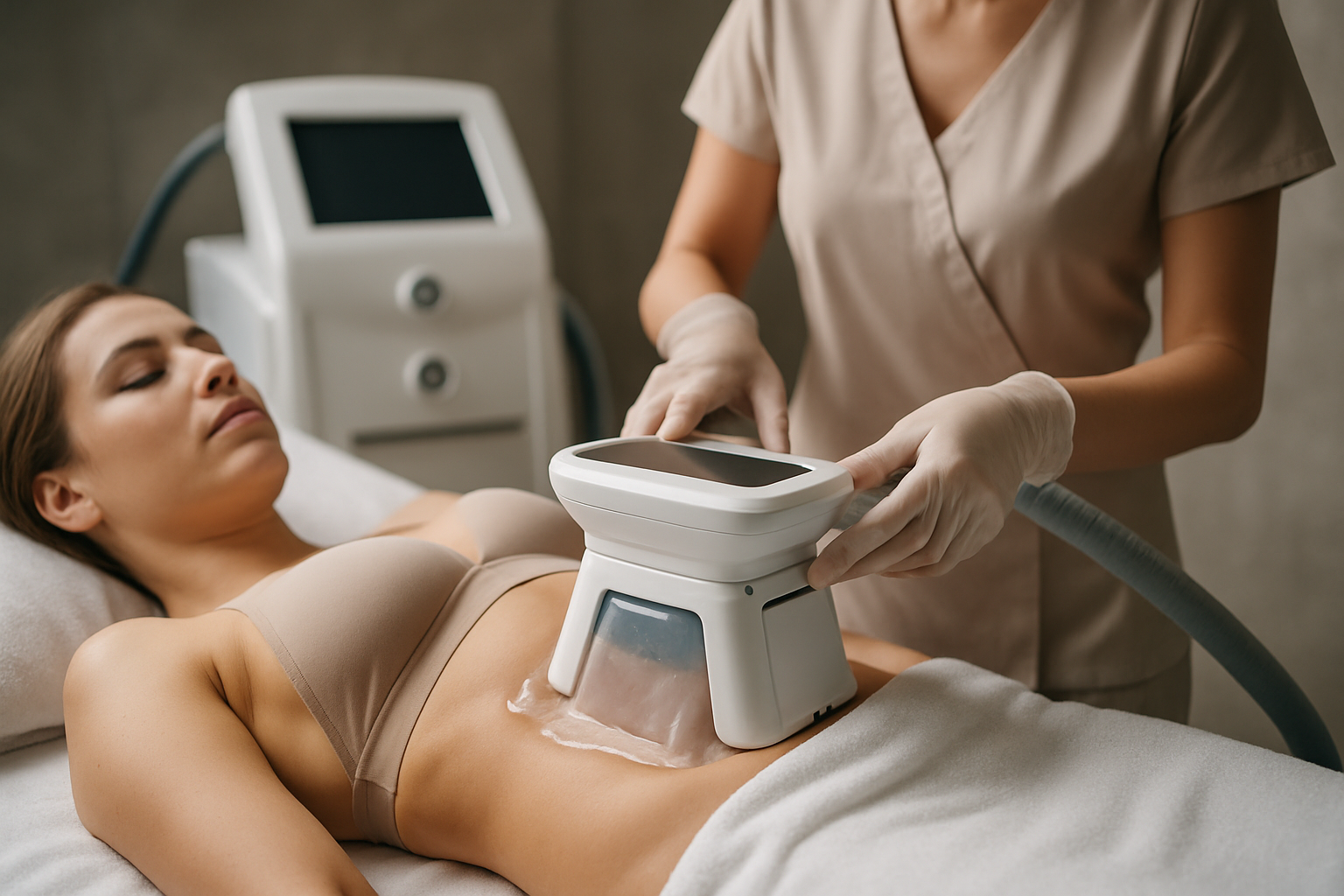Cryolipolysis: Sculpting Bodies Through Cold
Imagine a world where stubborn fat can be eliminated without surgery, needles, or downtime. This isn't science fiction – it's the reality of cryolipolysis, a groundbreaking fat reduction technique that's reshaping bodies and revolutionizing the aesthetics industry. By harnessing the power of controlled cooling, cryolipolysis offers a non-invasive solution to one of the most common cosmetic concerns: localized fat deposits. As this innovative treatment gains traction, it's not just transforming physiques; it's challenging our understanding of body contouring and opening new frontiers in the quest for the ideal silhouette.

The concept was first observed in the 1970s when scientists noticed that children who frequently consumed popsicles developed dimples in their cheeks. This phenomenon, dubbed “popsicle panniculitis,” laid the groundwork for what would eventually become a revolutionary fat reduction technique.
From Concept to Treatment
The journey from scientific observation to FDA-approved treatment was marked by rigorous research and technological innovation. In 2008, a team of researchers at Massachusetts General Hospital and Harvard University began developing a device that could deliver controlled cooling to target fat cells without damaging the skin or other tissues.
After extensive clinical trials, the first cryolipolysis device received FDA clearance in 2010 for treating love handles. Since then, additional clearances have been granted for treating various body areas, including the abdomen, thighs, upper arms, and even under the chin.
The Treatment Experience
A typical cryolipolysis session lasts about an hour and begins with the application of a gel pad to protect the skin. The device then uses vacuum suction to draw the targeted area between two cooling panels. As the temperature drops, patients may experience intense cold, tingling, or mild discomfort, which typically subsides within minutes as the area becomes numb.
Following treatment, the area may appear red and feel firm or swollen. These effects are temporary and usually resolve within a few days. Unlike more invasive procedures, cryolipolysis requires no downtime, allowing patients to resume normal activities immediately.
Results and Expectations
One of the most appealing aspects of cryolipolysis is its gradual, natural-looking results. As the body processes and eliminates the treated fat cells over several weeks, patients typically notice a slimmer, more contoured appearance in the treated area. Studies have shown an average fat reduction of 20-25% after a single treatment, with results becoming visible within 1-3 months.
It’s important to note that cryolipolysis is not a weight loss solution but rather a body contouring treatment designed to address stubborn fat deposits that resist diet and exercise. Ideal candidates are those who are close to their target weight but struggle with specific problem areas.
The Market Impact
Since its introduction, cryolipolysis has made significant waves in the aesthetics industry. According to market research, the global non-invasive fat reduction market, of which cryolipolysis is a major player, is expected to reach $1.1 billion by 2022. This growth is driven by increasing consumer demand for non-surgical body contouring options and technological advancements that improve treatment efficacy and patient comfort.
The popularity of cryolipolysis has also sparked a trend towards combination treatments, where practitioners pair fat freezing with other modalities like radiofrequency or ultrasound to enhance results and address skin laxity.
Advancements and Future Directions
As cryolipolysis technology evolves, researchers are exploring new applications and refining existing protocols. Recent developments include:
-
Multi-sculpting: New devices allow for simultaneous treatment of multiple areas, reducing overall treatment time.
-
Enhanced applicators: Improved designs better conform to different body contours, expanding treatable areas.
-
Shorter treatment times: Some newer protocols claim to achieve similar results in half the time of traditional sessions.
-
Customized cooling: Advanced systems adjust cooling intensity based on individual patient characteristics for optimal results.
Looking ahead, the future of cryolipolysis may include targeted treatments for cellulite reduction, improved protocols for treating larger volumes of fat, and integration with artificial intelligence for personalized treatment planning.
Safety and Considerations
While cryolipolysis has a strong safety profile, it’s not without potential side effects. Common temporary effects include redness, bruising, and numbness in the treated area. In rare cases, patients may experience paradoxical adipose hyperplasia, a condition where the treated area becomes larger rather than smaller.
As with any cosmetic procedure, patient selection and practitioner expertise are crucial. A thorough consultation with a qualified provider is essential to determine if cryolipolysis is appropriate and to set realistic expectations.
The Psychological Impact
Beyond its physical effects, cryolipolysis can have a significant impact on patients’ self-esteem and body image. For many, the ability to address long-standing “problem areas” without surgery provides a boost in confidence and motivation to maintain a healthy lifestyle.
However, it’s important to approach body contouring treatments with a balanced perspective. While cryolipolysis can be a valuable tool for enhancing one’s appearance, it should not be viewed as a substitute for overall health and wellness practices.
In conclusion, cryolipolysis represents a significant leap forward in non-invasive body contouring. By offering a safe, effective alternative to surgical fat reduction, it has expanded the options available to those seeking to refine their physique. As technology continues to advance and our understanding of fat cell biology deepens, cryolipolysis is likely to play an increasingly important role in the ever-evolving landscape of aesthetic medicine.





